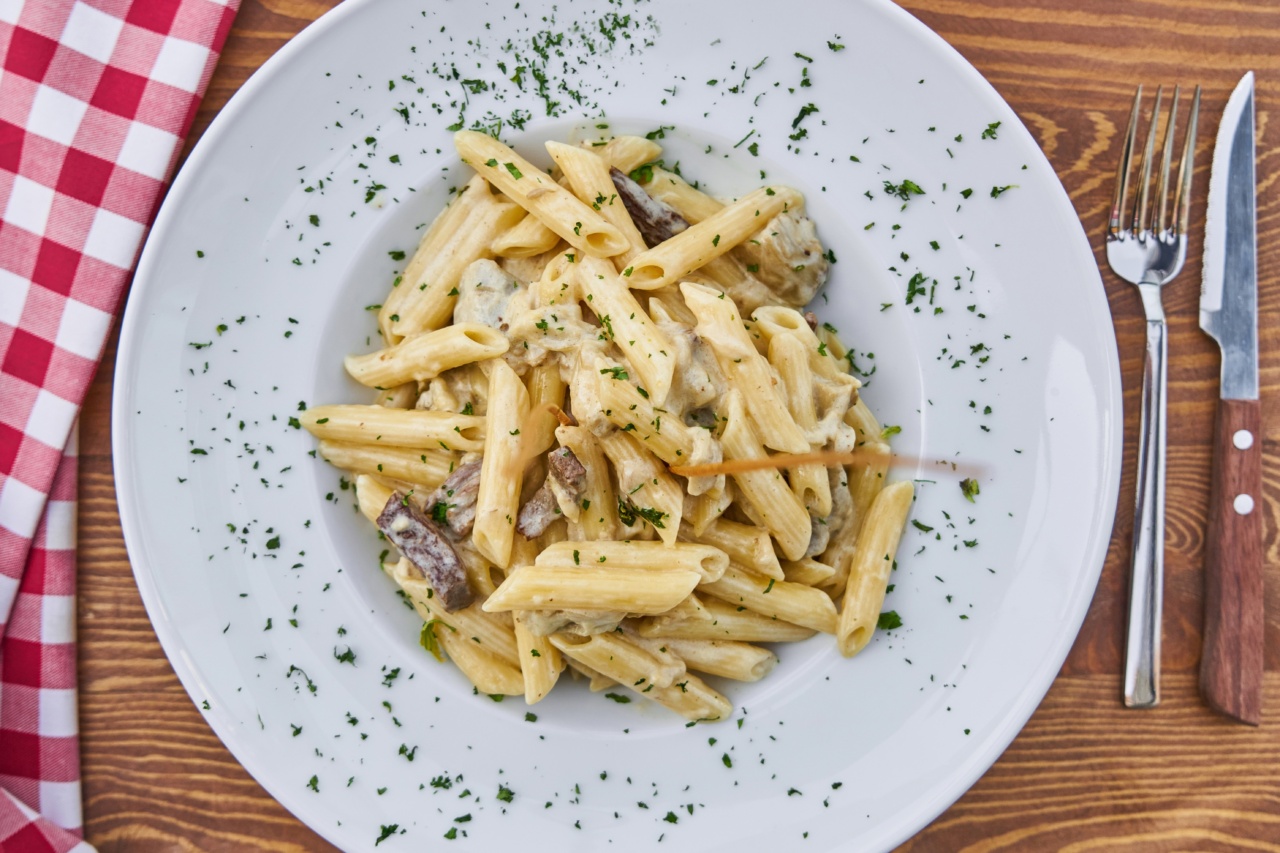White pasta and bread often get a bad rap in the health and wellness world. They are often seen as unhealthy and guilty pleasure foods that should be avoided. However, it is possible to enjoy these delicious foods guilt-free.
In this guide, we will explore how you can incorporate white pasta and bread into a balanced and healthy diet.
Understanding White Pasta and Bread
Before we dive into the guilt-free guide, it’s important to understand what exactly white pasta and bread are.
White pasta is made from refined wheat flour, which means that it has been processed to remove the bran and germ, leaving only the starchy endosperm. Similarly, white bread is made from refined wheat flour and undergoes a similar process. The refining process gives both white pasta and bread their characteristic white color and smooth texture.
The Nutritional Value of White Pasta and Bread
White pasta and bread have often been criticized for their lack of nutritional value compared to their whole grain counterparts.
While it’s true that they are not as nutrient-dense as whole grain options, they still provide some essential nutrients. Both white pasta and bread are good sources of carbohydrates, which are the body’s main energy source. They also contain small amounts of protein and dietary fiber.
Incorporating White Pasta and Bread into a Balanced Diet
The key to enjoying white pasta and bread guilt-free is moderation and balance. Here are some tips on how you can incorporate them into a balanced diet:.
1. Portion Control is Key
One of the main concerns with white pasta and bread is their high carbohydrate content. To avoid overconsumption of carbohydrates, it’s important to practice portion control.
Instead of loading your plate with a large serving of pasta or bread, opt for a smaller portion and balance it with a variety of vegetables, proteins, and healthy fats.
2. Pair with Nutrient-Dense Foods
Enhance the nutritional value of your pasta or bread dish by incorporating nutrient-dense foods. Adding a variety of vegetables, lean proteins, and healthy fats can boost the overall nutritional content of your meal.
For example, you can top your pasta with sautéed vegetables and grilled chicken or serve your bread with avocado and tomato slices.
3. Choose Whole Food Toppings and Fillings
When it comes to toppings and fillings, opt for whole food choices that provide additional nutritional benefits. Instead of high-fat and calorie-dense sauces, try using a homemade tomato sauce or pesto made with fresh herbs.
If you’re making a sandwich, load it up with fresh vegetables, lean meats, and a spread of hummus or mashed avocado.
4. Balance Your Macros
White pasta and bread are primarily sources of carbohydrates. To ensure your meal is well-balanced, pair them with protein and healthy fats. This can help slow down digestion and keep you feeling satisfied for longer.
For example, if you’re having white pasta for dinner, include grilled chicken or tofu and drizzle some olive oil over your dish for added healthy fats.
5. Choose Whole Grain Alternatives
If you’re looking for a healthier option, consider whole grain pasta or bread. Whole grains are less processed and contain more fiber, vitamins, and minerals compared to their refined counterparts.
They can provide a more sustained release of energy and keep you feeling fuller for longer. Experiment with whole grain options and find the ones you enjoy.
6. Be Mindful of Other Carbohydrate Sources
While white pasta and bread can be enjoyed in moderation, it’s important to be mindful of other sources of carbohydrates in your diet.
Aim to include a variety of carbohydrate sources, such as whole grains, fruits, and vegetables, to ensure you’re getting a wide range of nutrients.
7. Listen to Your Body
Everyone’s body is different, and what works for one person may not work for another. Pay attention to how your body reacts to white pasta and bread.
If you notice any digestive discomfort or negative effects, it may be a sign that these foods don’t agree with your body. Listen to your body and adjust your diet accordingly.
8. Make Your Own
If you have the time and enjoy cooking, consider making your own white pasta and bread from scratch. This way, you have control over the ingredients and can make healthier choices.
You can experiment with using different flours, such as whole wheat or spelt, to increase the nutritional value of your homemade pasta or bread.
9. Mindful Eating
Practicing mindful eating can help you enjoy white pasta and bread guilt-free. Slow down, savor each bite, and pay attention to the flavors and textures.
Mindful eating can help you reconnect with your body’s hunger and fullness cues, preventing overeating and promoting a healthier relationship with food.
The Bottom Line
White pasta and bread can be part of a healthy and balanced diet when enjoyed in moderation and in combination with other nutrient-dense foods.
It’s important to be mindful of portion sizes, pair them with whole foods, and listen to your body’s cues. By making conscious choices and incorporating other healthy habits, you can enjoy white pasta and bread guilt-free.































